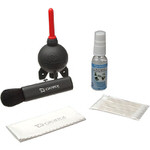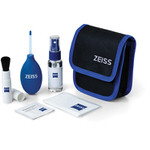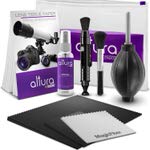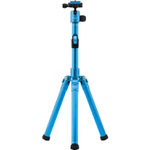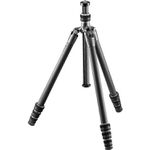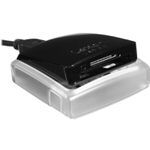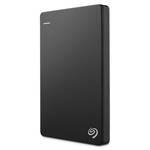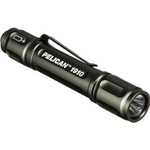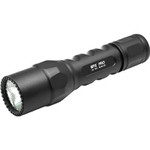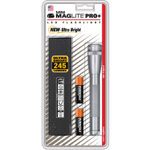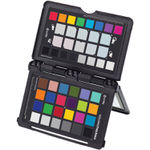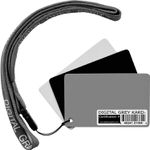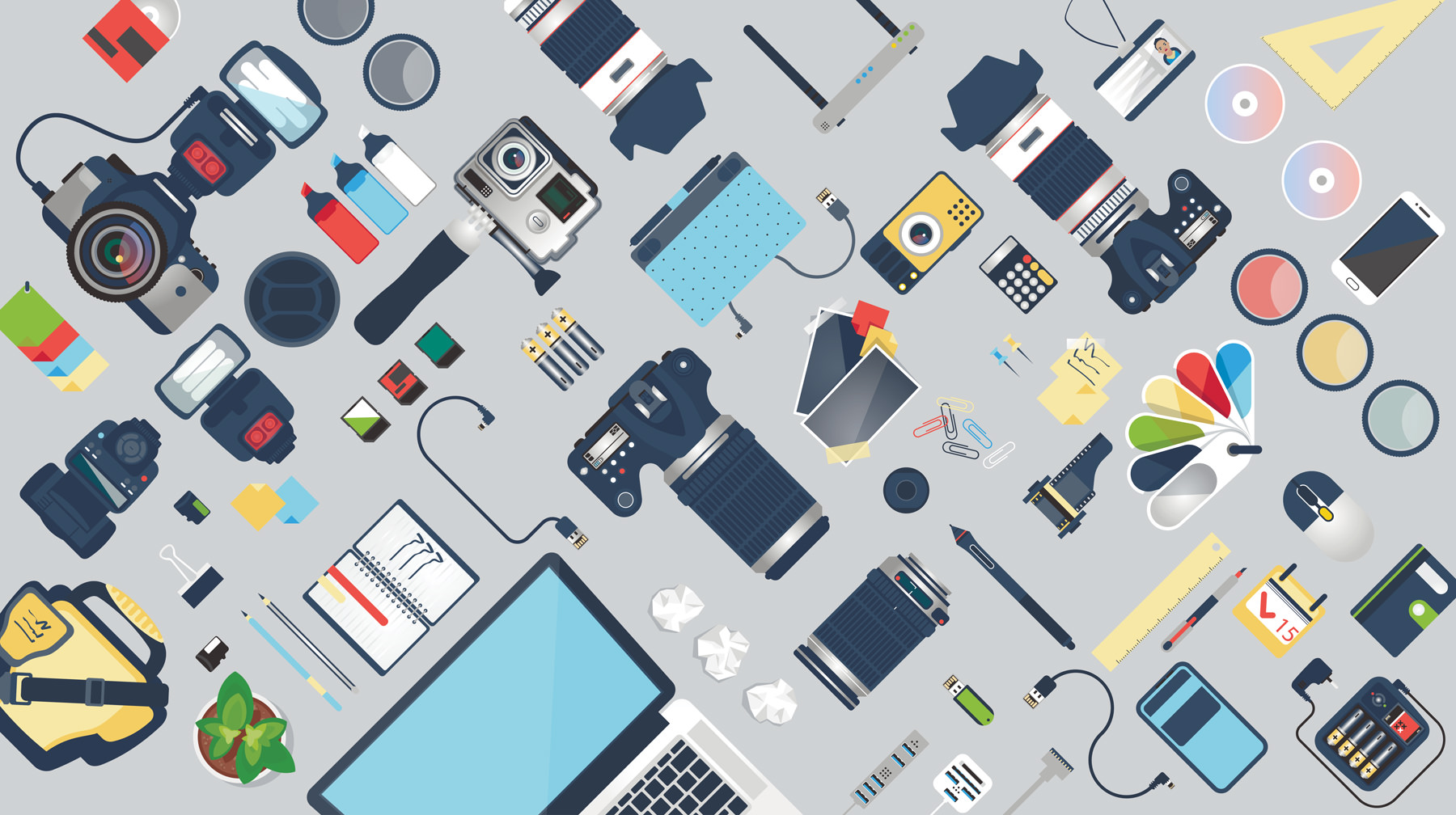
15 Things Every Photographer Needs to Carry
Whether you’re an experienced photographer or a nascent newbie with the camera, having a list of essentials in your pack or bag at all times is a good idea. Being prepared means missing fewer shots, improving those you get and enjoying yourself more.
With that in mind, we’ve put together a list of 15 items we believe every photographer should have in their bag. These suggestions should give you a headstart on creating your own list, so you and your photo equipment are always ready to go. Plus, we offer different buying options – budget, pro, and the gear PHLEARN uses – to help you make the right choice for your needs.
1. Lens Cleaning Supplies
Dust specks, spots and smudges happen, but they’re a pain to deal with in post processing. It’s far better to reduce or eliminate them by carrying a lens cleaning kit in your bag. The kit should include lens cleaning solution and a soft, lint-free cleaning pad. You’ll also need a small blower brush to eliminate dust that can damage your lens coating as well as show up in your photos.
For really quick cleaning, carry a lens pen in an outside pocket. The best ones have a soft brush on one end and a pad impregnated with carbon cleaning compound on the other. You’ll appreciate being able to remove minor spots without using any liquid.
Keeping your lenses, filters and sensor free of dust and smears will help you avoid time-consuming Photoshop retouching later. Your lens surfaces and seals will also last longer.
2. Collapsible Travel Tripod

PHLEARN
Manfrotto BeFree Compact Travel Tripod: Load Capacity: 8.8 lb, Maximum Height: 56.7″, Weight: 3 lb
Regardless of what you’re shooting, you’re eventually going to need to stabilize your camera. Lugging around a full-size tripod isn’t always convenient, so there are probably going to be times when you’ll leave it behind. Those are the perfect times for that surprise shot to get away because you can’t avoid camera shake.
High ISO settings cause excess noise that can be hard to reduce. Vibration reduction in your lenses is a valuable asset, but it’s far from foolproof. There are times when a tripod is the best, if not the only solution. Be prepared for those times with a travel tripod. Find a carbon-fiber model one and you’ll have plenty of strength and stability without a lot of extra weight.
The importance of this item can’t be overstressed. In addition to supporting your camera, it can stand in for an assistant. You can use it to hold a reflector, external flash or even a background to isolate a macro subject. Keep a small tripod on hand and save the bruises caused by kicking yourself.
3. Wireless Remote Shutter Release
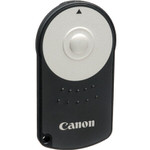
Wireless Remote Shutter Release
Remote Shutters are great for much more than long exposures. Using one of these can also free up your hands to for other things, like a reflector.
This goes hand-in-hand with the tripod and it’s every bit as indispensable. There’s no point in stabilizing your camera, then inducing camera shake by pressing the shutter button. That’s going to be especially likely in long exposure and telephoto shots. Sure, you can use your camera’s shutter delay timer, but that’s a great way to miss the moment, too.
Unlike a standard cable or wired remote release, a wireless model also lets you get away from your camera. Instead of spooking that eagle you’ve stalked for hours, find yourself a place to hide and trigger your shutter from there. Oh, and of course, you can grab that selfie to prove you really made it to Niagara Falls!
4. Memory Card Reader
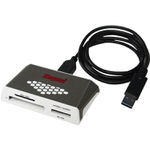
BUDGET
Kingston Card Reader: Up to 5 Gb/s Max. Data Transfer Rate, Supports UHS-I and UHS-II Card Speeds
Reviewing photos on your camera’s display screen is a waste of precious shooting time and doesn’t present an ideal view. It’s also an extra drain on your battery. That’s why professional photographers carry a separate memory card reader, to make it easy and quick to get them onto the nearest computer, tablet, or phone to review. When choosing a card reader, we recommend looking for one with multiple ways to connect to different devices.
By the way, you may want to consider this even if you’ve brought a laptop or other device with a built-in card reader. If that reader fails, you’ll still be able to retrieve those images.
5. Portable Storage Drive
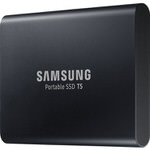
PRO
Samsung 2TB T5 Portable Drive: 2TB Capacity, USB 3.1 Type-C and Type-A Connections, Up to 540 MB/s Data Transfer
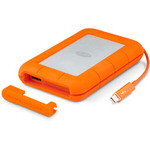
PHLEARN
LaCie 2TB Rugged Portable Drive: 2TB Capacity, Thunderbolt & Micro-USB 3.0 Ports, AES 256-Bit Encryption
Backing up your image files should always be a top priority. Accidents happen, even after your photos are safe on your laptop. Portable, external hard drives have become so small and affordable that there’s no good reason not to carry one with you.
You may not consider this a high-priority item, especially if you’re backing up to the Cloud. But, there’s a good chance you’ll change your mind when you’re out there in pristine, internet-free territory and something goes wrong. Be prepared for the worst with your own portable backup drive and good organization strategies so your important photos are safe and easy to find.
6. Spare Batteries
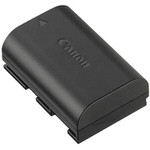
Spare Batteries
Unless you’re shooting film, your camera is basically useless dead. Don’t get caught without spare batteries.
This one should be so obvious that many readers may wonder why we bothered to add it to the list. The answer is, of course, that we’re only human and sometimes we tend to forget the most obvious things.
When the batteries are dead, the device is done. That holds true for your camera, external flash, light meter, and any other portable device you carry. Make sure you have fresh, charged spares for each one. For those that use disposable batteries, consider switching to rechargeables and bring along a portable charger. Not only will you be better prepared, you’ll be doing some good for the environment by reducing waste.
7. Light Meter

BUDGET
Dr.Meter LX1330B: 4-Range: 0/200/2,000/20,000/200,000 Lux, High Accuracy and rapid response, Auto Zeroing
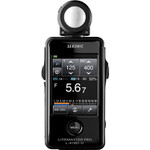
PRO
Sekonic LiteMaster Pro L-478D-U: Incident Metering for Ambient & Flash, Range: -2 to 22.9 EV at ISO 100, 2.7″ Color Touchscreen LCD
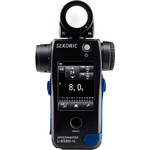
PHLEARN
Sekonic Speedmaster L-858D-U: Incident Metering for Ambient & Flash, Measuring Range: -5 to 22.9 EV (ISO 100)
Yes, this is probably built into your camera. It’s also easily fooled. Besides which, selecting the right metering mode when lighting situations change takes time that you may not have. A hand-held light meter is lightweight, inexpensive and occasionally your best bet for accurate exposure settings.
Working with supplemental lighting like reflectors and flash heads is another scenario that can present problems without a flexible way to measure incident light. You can take your best guess and risk losing the shot, go through a lot of trial and error, or take a measurement and get things right the first time.
This tool is an integral part of learning to take control of your exposure settings. It’s one of those items that there’s no real substitute for when you need it. Keep it on hand and you’ll thank yourself later.
8. Collapsible Reflector Kit
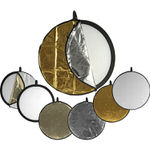
BUDGET
Impact 5-in-1 Reflector Disc: White, Silver, Gold & Silver/Gold Colors, One Stop Diffusion Panel
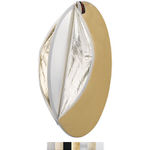
PRO
Photoflex Multidisc 9-in-1: 9 in 1 Reflector Kit, Double Riveted Frame, Double Laminated Surfaces
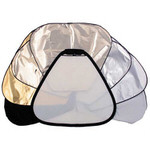
PHLEARN
Lastolite TriFlip 8 in 1 Grip Reflector Kit: Includes 2-Stop TriGrip Diffuser with TriFlip Sleeves with 7 Reflective Surfaces
When you need to manipulate light to get the effect you want, there’s nothing more convenient and thereby more valuable than having the right reflector on hand. Fortunately, there are a good number of reasonably-priced kits on the market with lightweight, folding reflectors in all the colors you need.
Whether you’re manipulating ambient light or setting up your own, the right kit will ensure that you get the job done. Not only can you redirect the key light to eliminate unwanted shadows, you’ll also have these options:
- Warm the light with a gold reflector
- Increase contrast with a silver reflector
- Retain the color temperature of the light with a white reflector
Higher-end kits will also include a diffuser for softening harsh light and a black surface to absorb light. This is one of the most versatile items you can add to your gear bag.
9. Gaffer Tape
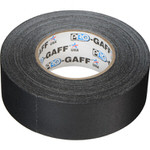
Gaffer Tape
The photographer’s duct tape. You’ll never know when you’ll need it, but you’ll need it!
If duct tape is the homeowner’s best friend, this is the photographer’s equivalent. It’s like a repair kit and an extra set of hands all on one roll. Here’s a short list of what you can do with this marvelous stuff:
- Hold up an impromptu background
- Patch that leaky rain cover
- Secure your external flash right where you need it
- Lock your focus ring
- Cover your viewfinder to block light during long exposures
- Organize all those power cords
- Secure a broken tripod leg
- Narrow the beam of your flashlight
- Attach a bounce reflector to your flash
- Mark your dead batteries
- Temporarily patch a cracked lens cap
That’s just to name a few. I’m sure you’re already thinking of your own gaffer’s tape solutions.
For those of you wondering why a roll of duct tape won’t work just as well, there are two important reasons: Gaffer’s tape has a nice, matte surface that won’t reflect light and the adhesive is formulated to avoid leaving sticky residue on your gear.
10. Small Flashlight
This is such a simple tool, but a life-saver in so many situations. We recommend keeping at least one on hand, tucked in an outer pocket of your camera bag. A tough and lightweight “tactical” light is a good choice.
Out there under the stars, it will help you avoid stumbling, let you check your camera settings, help you find that lens cap you dropped and can even be used as a focusing aid when there’s nothing else bright enough. Let’s not forget that you can use it for all kinds of light painting fun, from lighting objects in the frame to writing letters in the air. You might also find it very useful to identify those things that go “bump” in the night.
You’ll find this is a handy tool in darkened areas indoors, too. Just be sure to cover the beam with your hand to avoid aggravating other people and having yourself ejected from the premises.
11. Silica Gel Packets
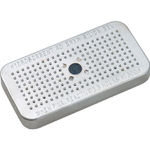
Silica Gel Packets
Leave them in your camera bag and forget about them. They will eliminate moisture within your gear.
Moisture is not a friend to photo equipment. If you’ve ever seen a lens with fungus growing inside or a corroded lens mount, you’ll know this to be a fact. The surprising thing is that you don’t have to dunk your equipment or take it out in the rain to get it wet. One of the most common sources of moisture on and in photo equipment is condensation from quick temperature changes as you come back indoors.
Whatever the source of moisture, it’s important to minimize it as quickly as possible. Wiping off raindrops, snowflakes, etc. with an absorbent cloth or towel is, of course, a good start. You can help eliminate the rest by simply keeping several packets of silica gel in your bag and gear pouches. You can purchase these online, but the ones that come in medicine bottles, mailed parcels, etc. work well, too.
These packets can be dried in a warm oven and re-used. If you use the color-changing type, you may want to use a microwave oven instead.
12. Gray Card
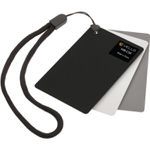
BUDGET
Vello White Balance Card: Achieves Optimal Color Balance, White, Black, and 18% Gray Balance Cards
There are two important values of reflected light that affect your photos: intensity and color temperature. The former of those determines how you or your exposure system should adjust ISO, shutter speed and aperture size to render the scene correctly. The latter affects the overall color balance of your photo. There are different methods for determining both, but both require a reference. That’s where this item becomes a must-have.
Exposure: When shooting in an auto-exposure mode, your camera, in very simple terms, will try to render the metered portion of a scene to represent the same amount of light reflected by a neutral gray color. The balance of light and shadow in some scenes, such as snowy landscapes or predominantly dark areas, can “fool” your camera’s metering system. Spot metering on a gray card placed in the same light provides a good base reference.
White Balance: Incorrect white balance settings cause colors to render inaccurately. Not all situations make for an easy decision as to what setting to use, especially in low light. A gray card in the same light makes an excellent target for setting the Custom White Balance for your camera.
There’s some argument over which gray value you should carry, but in general, 18 percent gray is usually considered neutral. Some photographers recommend using a +2EV exposure compensation after metering and others prefer a 12 percent gray card. Find out which works best for you and use it consistently to get accurate color and exposures. It also makes a great reference for your hand-held light meter.
13. Rubber Bands
There are about a hundred uses for rubber bands, and since they don’t take up any appreciable space, it makes sense to keep some on hand. Toss a snack-size sandwich bag with an assortment of bands in a bag pocket.
The reasons for carrying these along with your gear are as numerous as those for gaffer’s tape. In fact, if you have both, you can probably perform any temporary equipment repairs needed.
14. Trash Bag

Trash Bags
Your best friend in a rainstorm. Protect your camera, your gear, or your body when things get wet.
Fold a 30-gallon, heavy-duty, lawn-style trash bag as small as you can and tuck it into a corner pocket of your pack or camera bag. It weighs almost nothing, takes up minimal space, but can save you or your gear, as well as come in handy in other ways.
Toss it on wet pavement or muddy ground for a quick tarp. Slip it over your camera and use a skylight filter to affix it to the front of your lens for a quick rain cover. (Use some of those handy rubber bands to keep it from flopping around.) If you find yourself in a sudden downpour, slit it open and create a lean-to shelter for you and your gear while you wait it out. Use it as a sun shade for your model between shots. You can even fill it with sand to use as a beanbag-style rest for your camera or a weight to stabilize your tripod.
You may find yourself carrying a few of these for a whole host of uses.
15. Pen and Notepad

Pen and Notepad
Take notes! Whether it be about a location or potential client, you should always have a pen and notebook handy.
The EXIF data in your image files might give you all the information you need about your photos, but there’s much more you may want to remember. You camera can’t remind you of what was happening when you took the shot or anything about the location other than the GPS coordinates. It can’t give you the weather conditions or your thoughts at the moment you took the shot.
You might want to draw yourself a map of the route you took to a destination. Maybe you’ll need the name and address of that couple who signed a model release in exchange for a print. Perhaps you’ll want to write out your Last Will and Testament if you get lost. All kidding aside, there are dozens of good reasons to have pen and paper in your bag.
Bonus Item: Hand Warmers
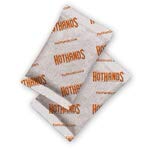
Hand Warmers
Not just for your hands. Use those rubber bands to attach them to your lens to reduce fog and moisture buildup.
There’s another reason to worry about condensation. When shooting in changing temperatures, it can build up very quickly on your lens elements, both inside and out on some. This is an especially important consideration for long-exposure astrophotography and similar situations. Obviously, this “dew” will interfere with the sharpness of your photos.
To avoid this buildup, you can attach one or more chemical hand warmers to your lens with rubber bands. The inexpensive, plastic-bag type will work just fine, but be sure not to puncture one.
Coincidentally, these work very nicely for warming your hands or toes when you’re out there on cold nights, too.
Although every photo session will be different, there are a few things that most every photographer should keep in their camera bag. While this list isn’t necessarily complete, it should give you some fresh ideas and a good start on preparing your pack for your next professional assignment or photo outing.
